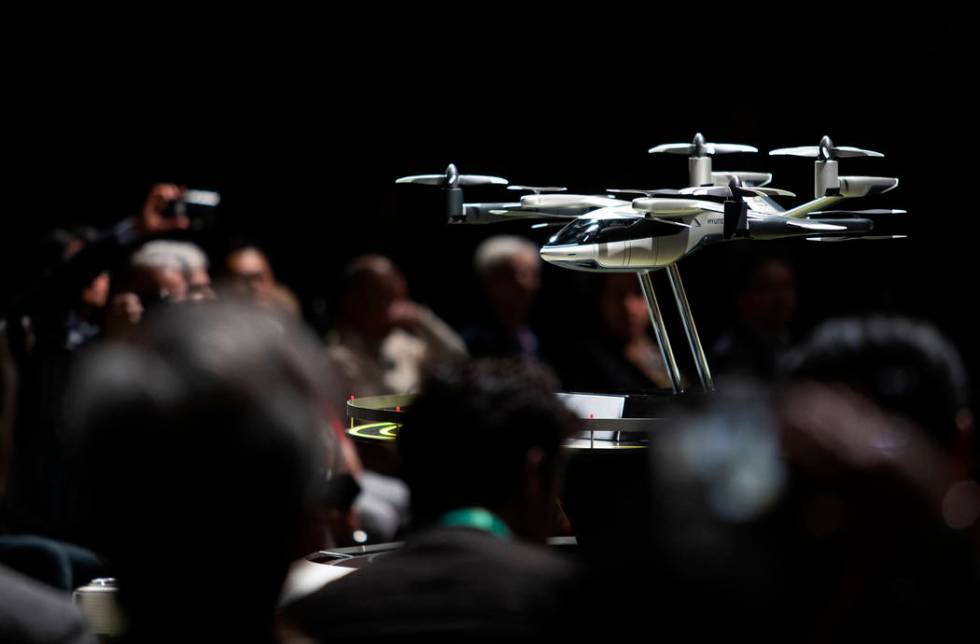Uber, Hyundai announce flying taxi project partnership

Hyundai and Uber on Monday announced a partnership for the ride-hailing company’s Uber Air vision.
Uber is looking to introduce flying taxis to the airspace as early as 2023, with Hyundai being one of the manufacturing partners to create the vehicles. The announcement came during a press conference at Mandalay Bay.
A full-scale aircraft concept, the SA-1, will be on display at Hyundai’s booth starting Tuesday at CES 2020 in the Las Vegas Convention Center. Attendees will be able to sit in the model and view a virtual reality ride simulation.
Hyundai is the first automotive company to join the Uber Elevate initiative, bringing automotive-scale manufacturing capability and a track record of mass-producing electric vehicles to the plate.
“Our vision of Urban Air Mobility will transform the concept of urban transportation,” said Jaiwon Shin, executive vice president and head of Hyundai’s Urban Air Mobility division. “We expect UAM to vitalize urban communities and provide more quality time to people. We are confident that Uber Elevate is the right partner to make this innovative product readily available to as many customers as possible.”
The SA-1 was created in part through Uber’s open design process, a NASA-inspired approach that sparks innovation by publicly releasing vehicle design concepts so any company can use them to develop their own air taxi models and engineering technologies.
The SA-1 is designed to reach speeds of up to 180 mph and fly trips up to 60 miles in distance.
Hyundai will produce and deploy the air vehicles, while Uber will provide airspace support services, connections to ground transportation, and customer interfaces through an aerial ride share network.
The Hyundai vehicle will be 100 percent electric, using distributed electric propulsion and during peak hours will require between five and seven minutes for recharging.
The SA-1 will use distributed electric propulsion, powering multiple rotors and propellers around the airframe to increase safety by decreasing any single point of failure. Having several, smaller rotors also mitigates noise issues compared to large rotor helicopters with combustion engines.
Hyundai’s model is designed to take off vertically, transition to wing-borne lift in cruise, and then transition back to vertical flight to land. Plans call for the SA-1 to be piloted initially, but the long-term goal is for autonomous operations.
The two companies are collaborating on infrastructure concepts to support takeoff and landing for this new class of vehicles. This ties into Hyundai’s connected city model involving urban air mobility, purpose-built vehicles, Pods on wheels that can be used for a variety of uses, including mobile business, housing units, and hubs, where the ground and air vehicles will dock in central meetings spaces for riders.
“Hyundai is our first vehicle partner with experience of manufacturing passenger cars on a global scale,” said Eric Allison, head of Uber Elevate. “We believe Hyundai has the potential to build Uber Air vehicles at rates unseen in the current aerospace industry, producing high quality, reliable aircraft at high volumes to drive down passenger costs per trip. Combining Hyundai’s manufacturing muscle with Uber’s technology platform represents a giant leap forward for launching a vibrant air taxi network in the coming years.”
Contact Mick Akers at makers@reviewjournal.com or 702-387-2920. Follow @mickakers on Twitter.